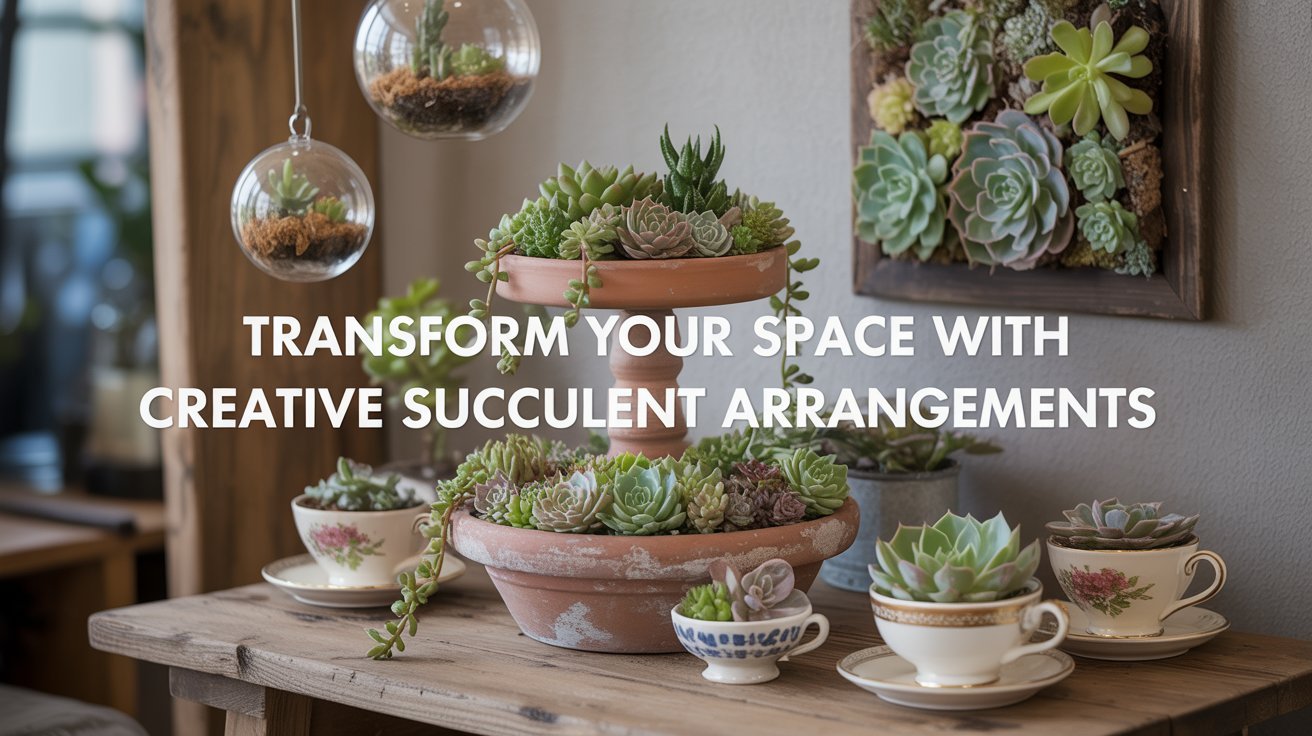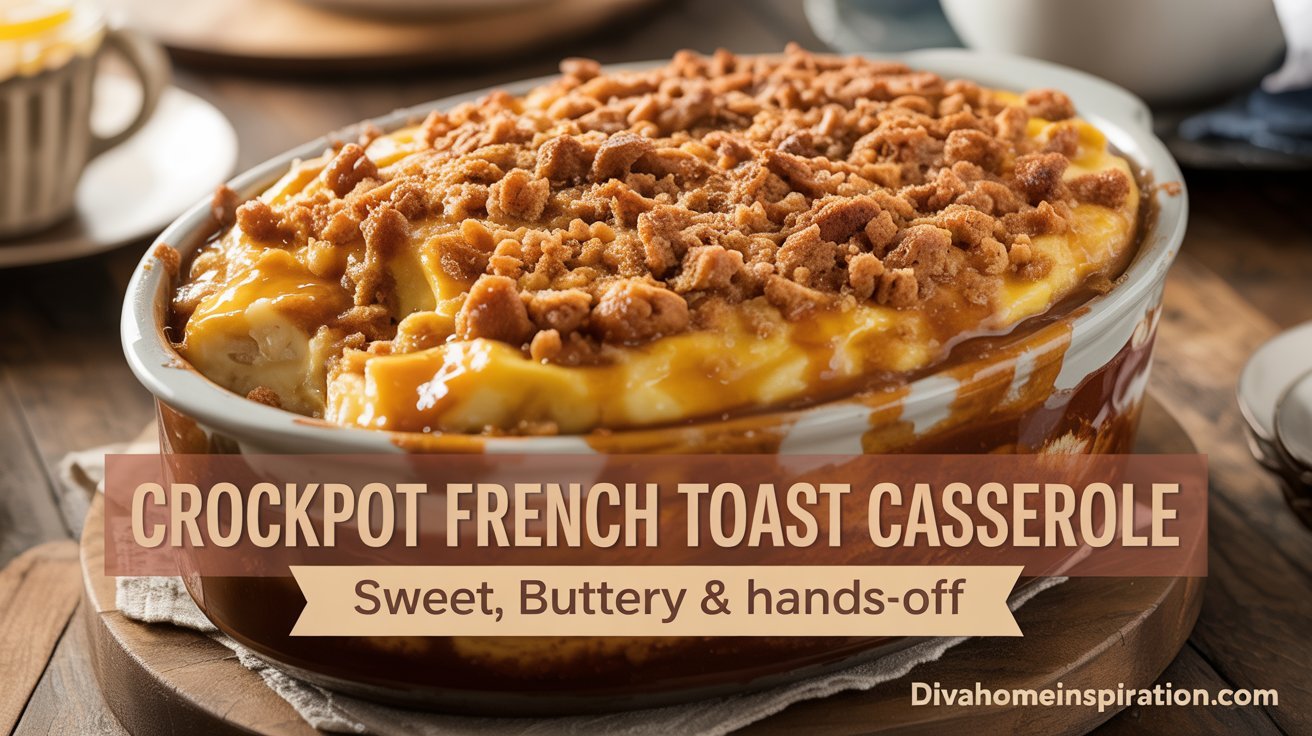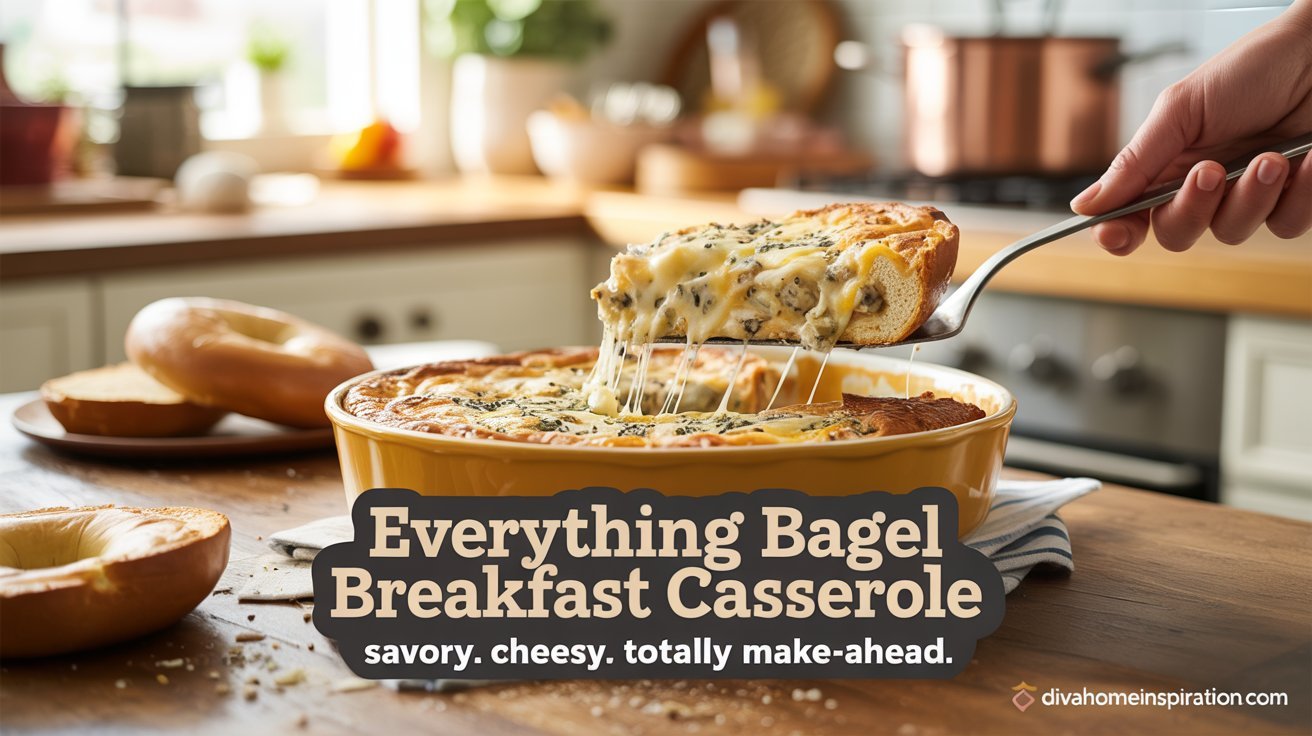This article may contain affiliate links. If you click on these links and make a purchase, we may receive a small commission at no extra cost to you. This helps support our website and allows us to continue to produce content like this. Thank you for your support!
Succulents are the perfect addition to summer decor—vibrant, low-maintenance, and versatile. Whether you’re sprucing up your indoor space or enhancing your outdoor oasis, these seven creative succulent arrangements will add a fresh touch to your home this season.
1. Tiered Terracotta Delight
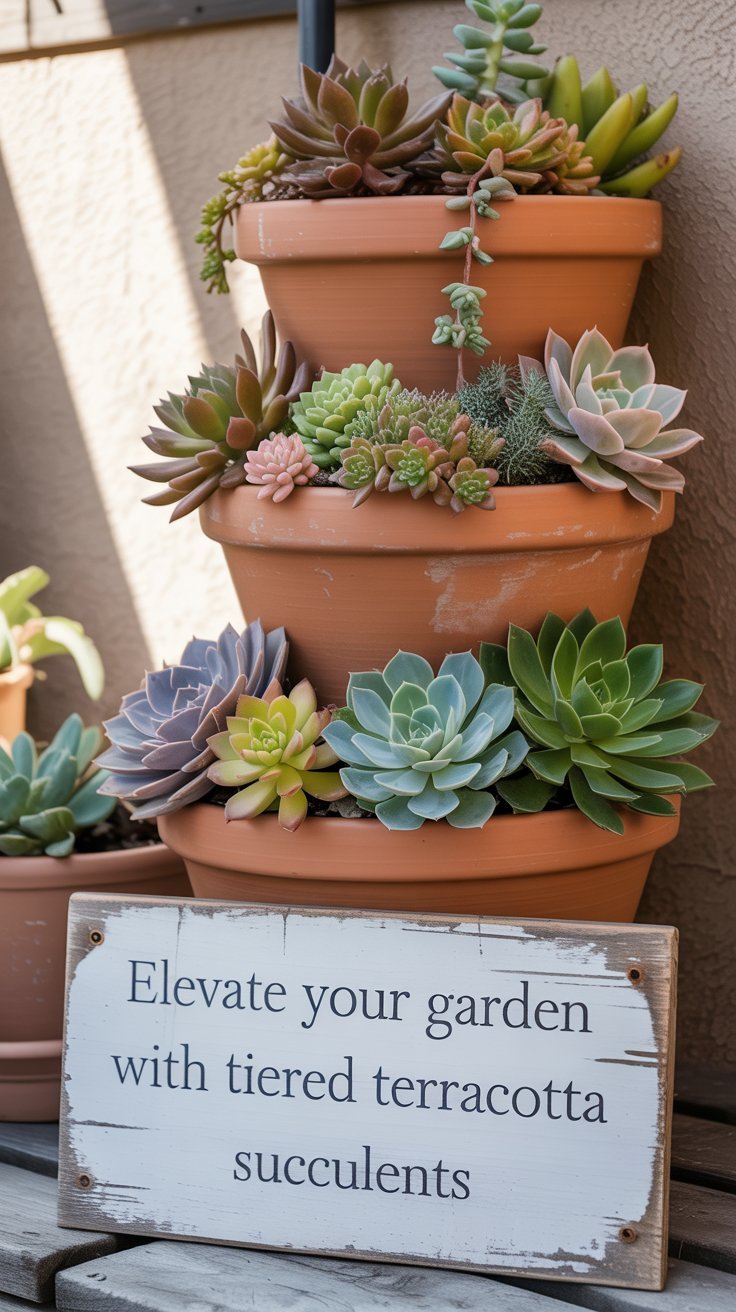
Stacking terracotta pots in a tiered fashion creates a cascading effect that’s both eye-catching and space-saving. Plant a variety of succulents in each tier, mixing colors and textures for visual interest. This arrangement is perfect for patios or balconies where floor space is limited.
The natural, earthy tones of terracotta complement the vibrant greens and purples of succulents, creating a harmonious display. You can enhance the look by adding decorative pebbles or moss between the plants. This setup not only adds greenery but also serves as a charming focal point in your outdoor decor.
Maintenance is straightforward—ensure the pots have proper drainage, and water the succulents sparingly, allowing the soil to dry out between waterings. With minimal effort, this tiered arrangement will thrive throughout the summer months.
2. Hanging Glass Orbs
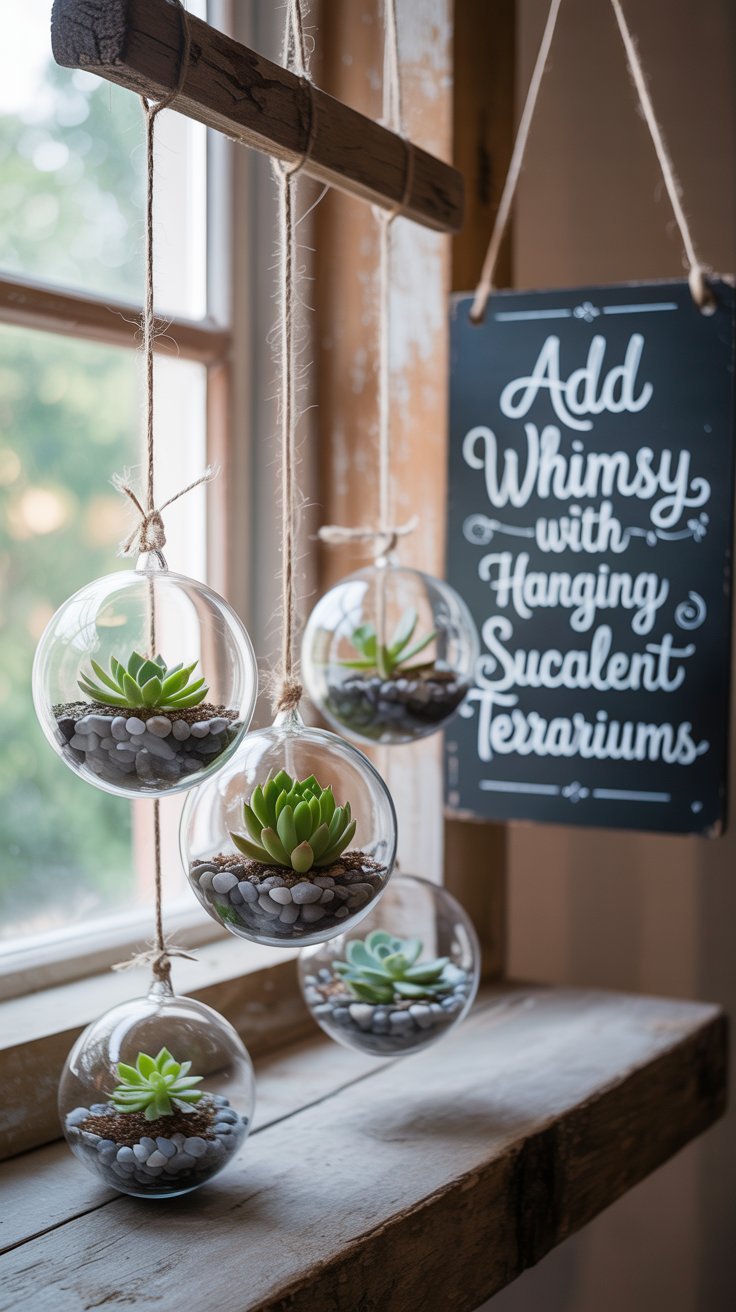
Suspended glass orbs filled with miniature succulents bring a whimsical charm to any room. Hang them near windows to catch the light, creating a floating garden effect. These orbs are ideal for adding greenery without cluttering surfaces.
Choose a variety of small succulents like string of pearls or echeveria to fill the orbs. Add a layer of small pebbles at the bottom for drainage, followed by succulent soil. This setup not only looks elegant but also provides the necessary environment for the plants to thrive.
Regularly rotate the orbs to ensure even sunlight exposure, and water sparingly to prevent overwatering. These hanging gardens are a delightful way to incorporate plants into your decor, especially in areas with limited space.
3. Vintage Teacup Planters
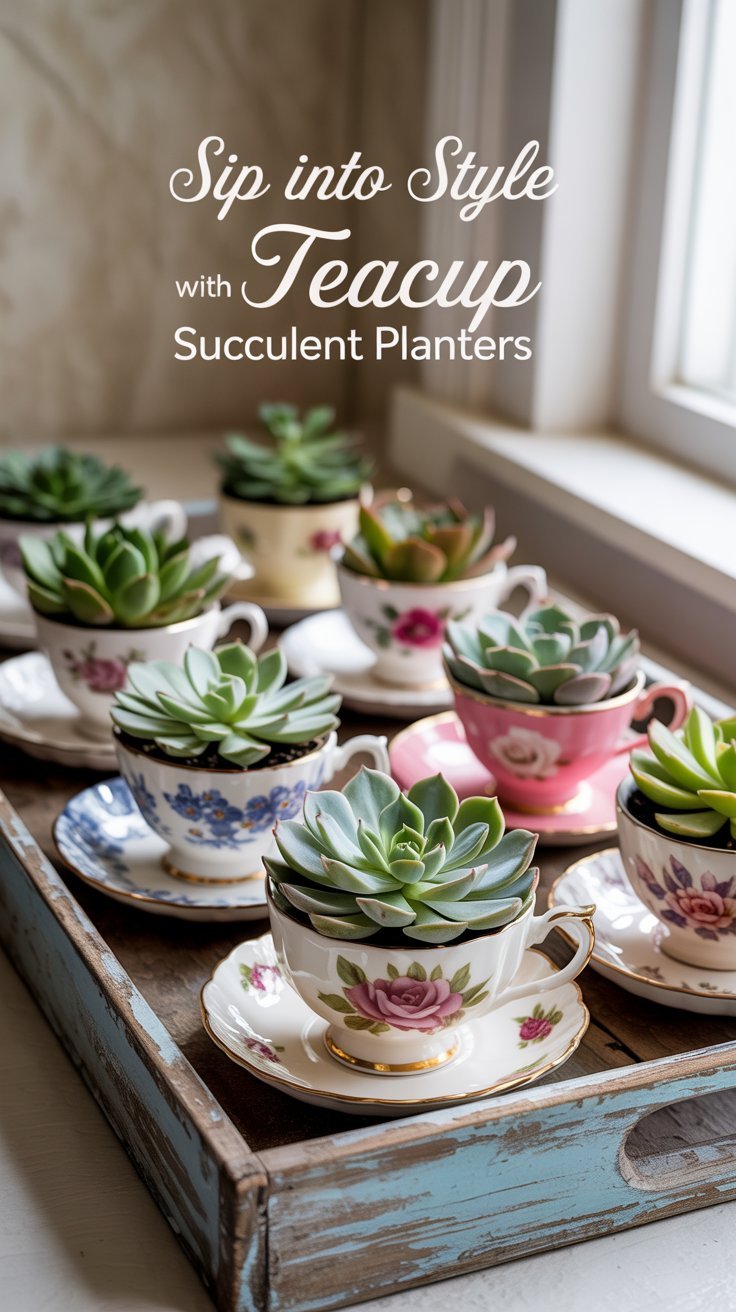
Repurpose vintage teacups as quaint succulent planters. Their delicate designs contrast beautifully with the bold shapes of succulents. Arrange them on a tray for a charming centerpiece or place them individually around your home for subtle accents.
To create these planters, fill each teacup with a layer of small stones for drainage, followed by succulent soil. Plant small succulents like haworthia or lithops, and top with decorative gravel. This combination adds a touch of elegance and whimsy to your decor.
Ensure the teacups are placed in areas with adequate sunlight, and water the succulents sparingly. These planters make for excellent conversation pieces and can also serve as thoughtful gifts for friends and family.
4. Wall-Mounted Frames
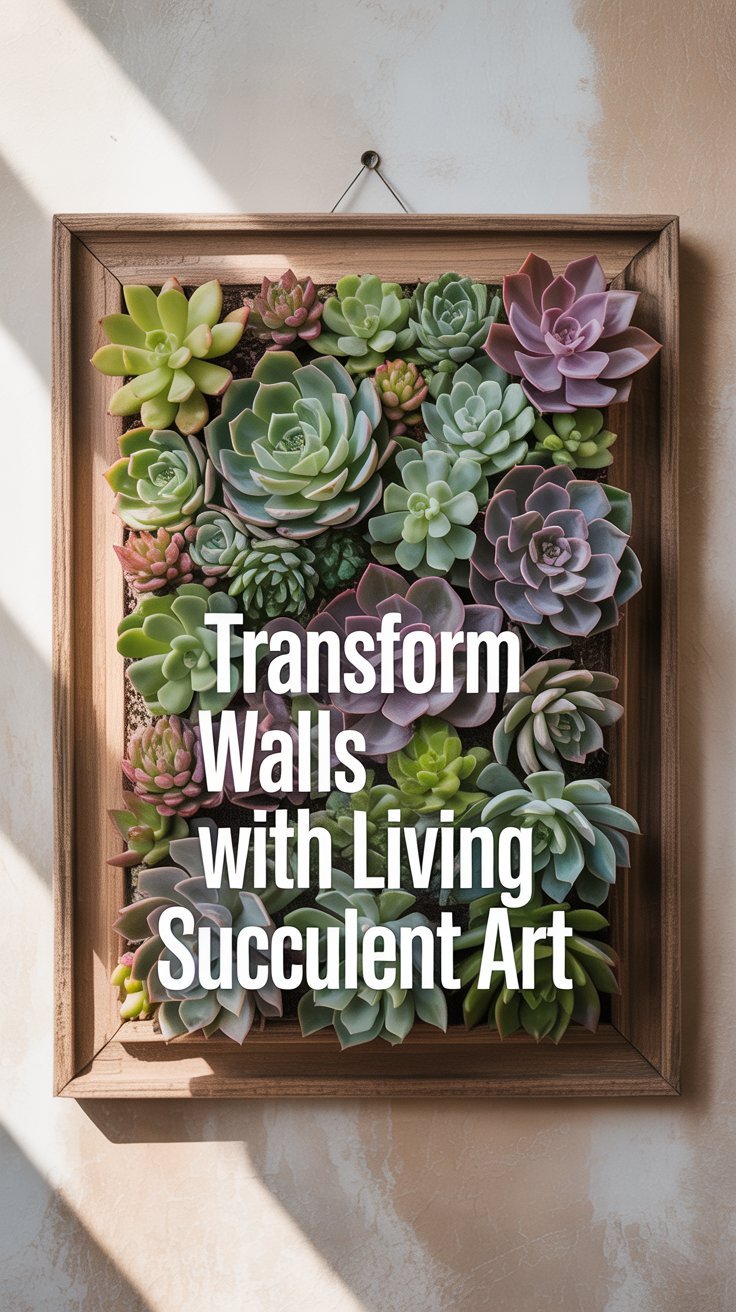
Transform an old picture frame into a living piece of art by adding a mesh backing and planting succulents within. Hang it on your porch or living room wall to create a vertical garden that saves space and adds a unique focal point.
Start by attaching a wire mesh to the back of the frame and filling the space with a soil mix suitable for succulents. Insert succulent cuttings through the mesh, ensuring they are secure and have contact with the soil. Over time, the succulents will root and grow, creating a lush, green display.
Water the arrangement lightly, allowing the soil to dry out between waterings. This living frame adds a dynamic element to your decor and showcases your creativity and love for plants.
5. Succulent Wreath
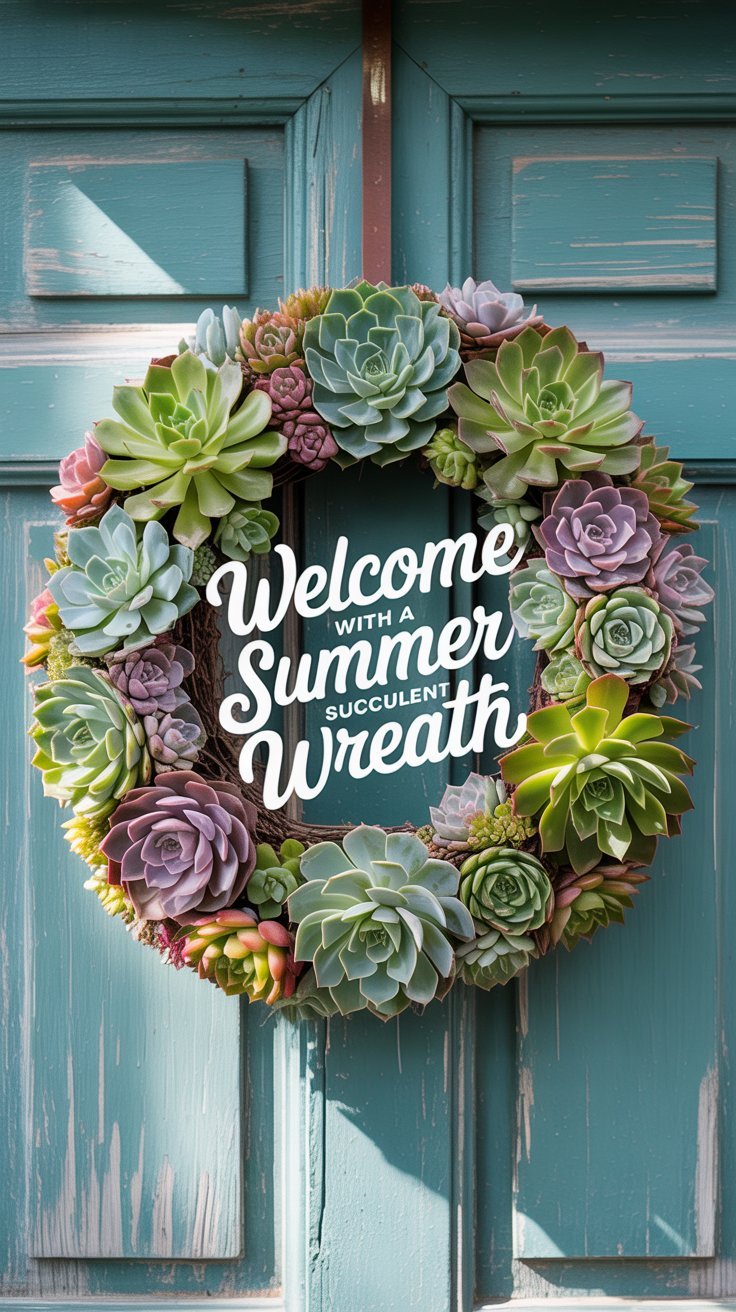
Craft a wreath using a variety of succulents for a fresh take on traditional door decor. This living wreath can adorn your front door, serving as a warm welcome to guests and a testament to your green thumb.
To assemble the wreath, use a wire frame and sphagnum moss as the base. Insert succulent cuttings into the moss, securing them with floral pins if necessary. Choose a mix of colors and textures to create visual interest and depth.
Mist the wreath lightly to keep the moss moist, and place it in a location with indirect sunlight. With proper care, the succulents will root into the moss, allowing the wreath to thrive and evolve over time.
6. Driftwood Centerpiece
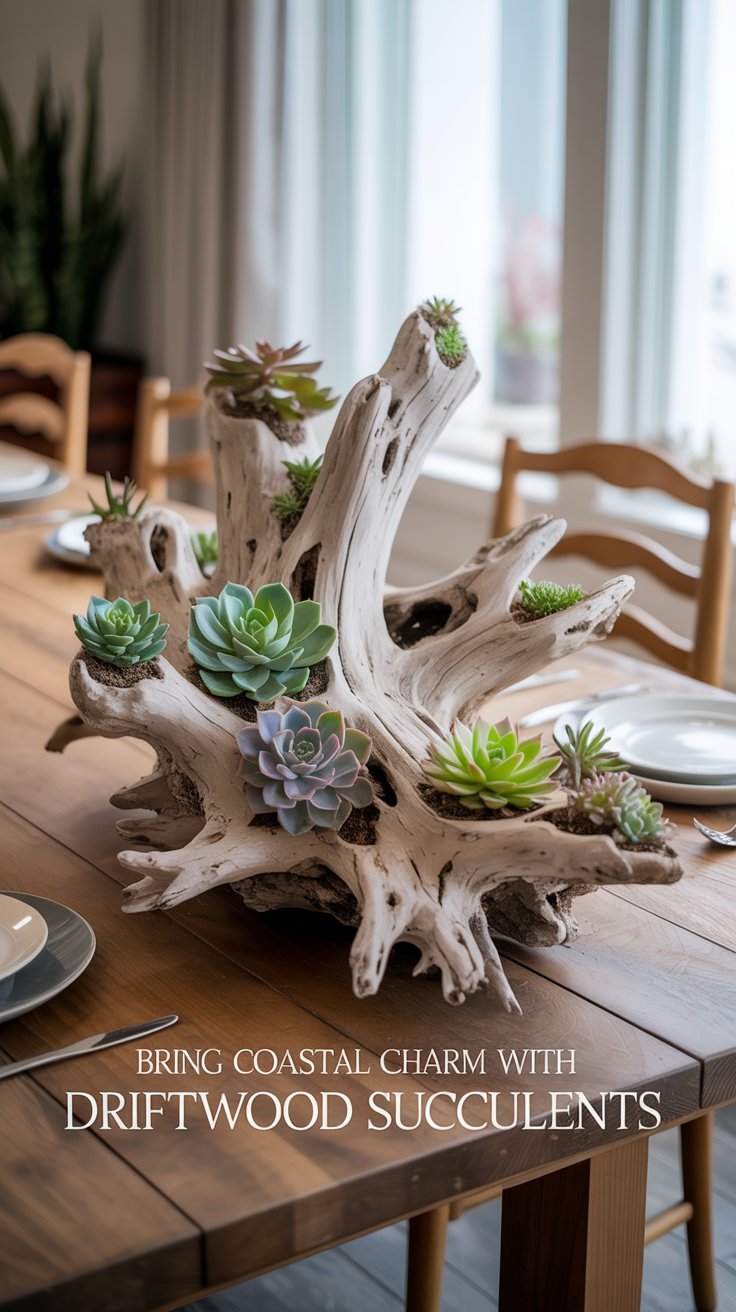
Incorporate succulents into a piece of driftwood for a rustic, beach-inspired centerpiece. The natural grooves of the wood provide perfect nooks for planting, resulting in a harmonious blend of textures. Place it on your dining table or mantel for a touch of coastal elegance.
Begin by selecting a piece of driftwood with natural indentations or crevices. Fill these spaces with a bit of succulent soil and insert small succulents like sedum or crassula. Add decorative elements like pebbles or shells to enhance the seaside theme.
Water the arrangement sparingly, ensuring the wood doesn’t become overly saturated. This centerpiece brings a piece of the beach into your home and serves as a conversation starter during gatherings.
7. Mason Jar Arrangements
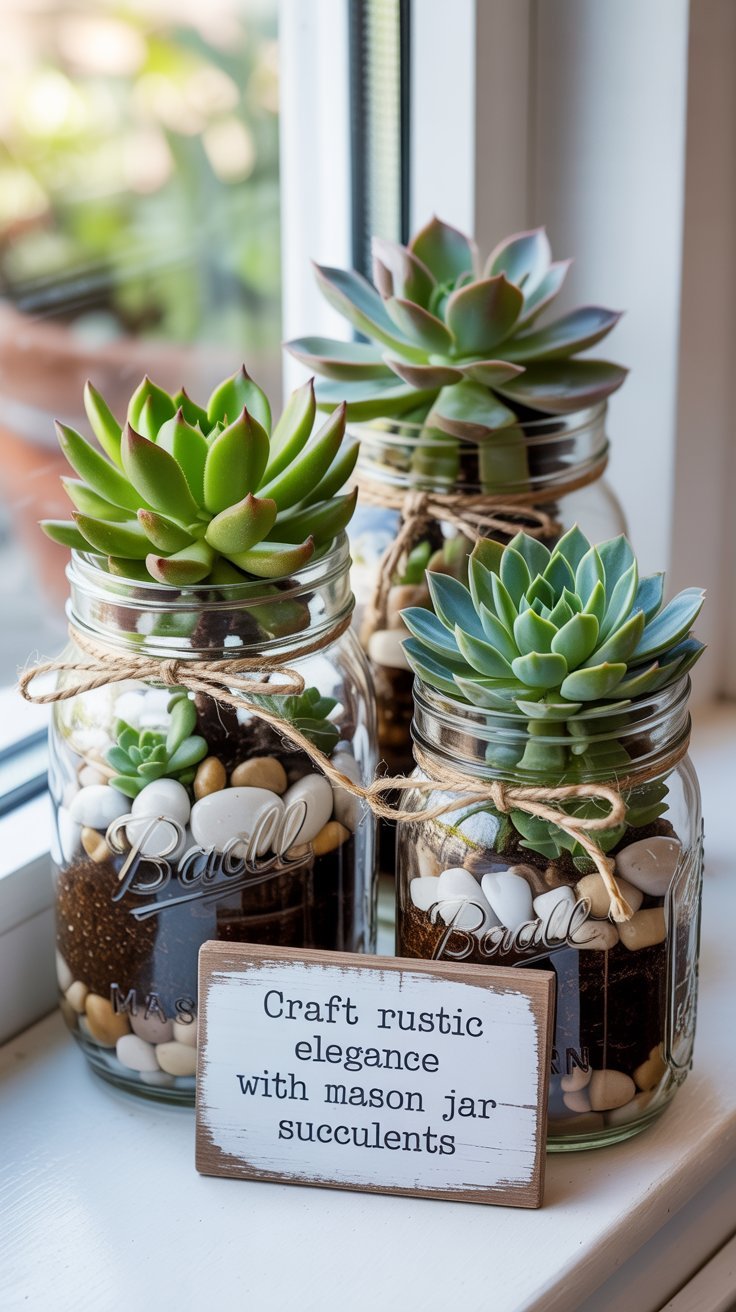
Fill mason jars with layers of pebbles, soil, and your choice of succulents for a simple yet stylish display. Tie a ribbon around the jar’s neck for added flair. These arrangements make for excellent gifts or charming additions to your kitchen windowsill.
Start by adding a layer of small stones or pebbles at the bottom of the jar for drainage, followed by a layer of activated charcoal to keep the soil fresh. Add succulent soil and plant your chosen succulents, such as echeveria or jade plant. Top with decorative gravel or sand for a polished look.
Place the jars in a location with plenty of sunlight, and water sparingly to prevent root rot. These mason jar arrangements are versatile and can be customized to match any decor style.
Tips for Maintaining Your Succulent Arrangements:
- Light: Ensure your succulents receive ample sunlight, ideally 6 hours a day.
- Watering: Allow the soil to dry out completely between waterings to prevent root rot.
- Soil: Use well-draining soil specifically designed for succulents and cacti.
- Containers: Opt for containers with drainage holes to facilitate proper water flow.
